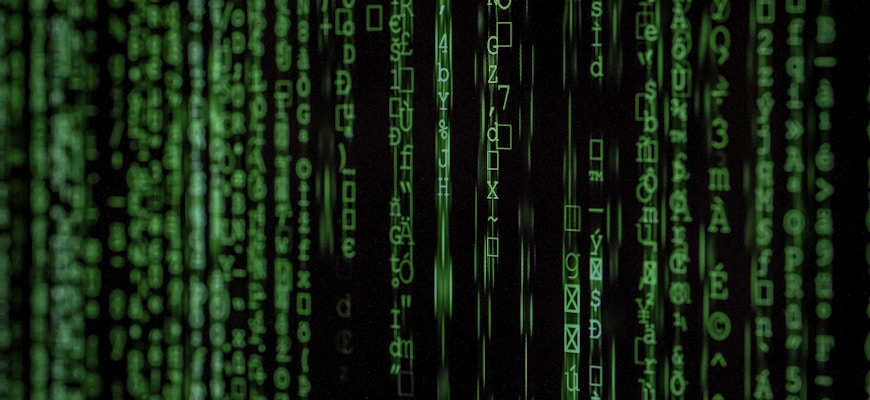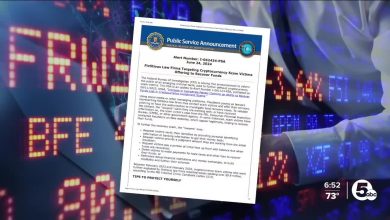Blockchain Forensics: Tracing Lost or Stolen Digital Assets

- Understanding Blockchain Forensics and its Importance
- Methods and Tools for Tracing Lost Digital Assets on the Blockchain
- The Role of Blockchain Analysis in Investigating Digital Asset Theft
- Challenges and Limitations of Blockchain Forensics in Tracing Stolen Assets
- Real-Life Examples of Successful Recovery of Stolen Digital Assets through Blockchain Forensics
- The Future of Blockchain Forensics: Emerging Trends and Technologies
Understanding Blockchain Forensics and its Importance
In the world of blockchain technology, the field of blockchain forensics plays a crucial role in investigating and tracing lost or stolen digital assets. This specialized area focuses on analyzing transactional data within a blockchain network to identify illicit activities and track down the culprits involved. By utilizing advanced tools and techniques, blockchain forensics experts can unravel complex transactions and uncover valuable insights to assist in legal proceedings.
One of the key aspects of understanding blockchain forensics is recognizing the transparency and immutability of blockchain transactions. Every transaction conducted on a blockchain network is recorded on a public ledger, known as the blockchain, which is accessible to anyone. This transparency allows investigators to trace the flow of digital assets and identify suspicious or fraudulent activities with a high degree of accuracy.
Another important factor to consider is the decentralized nature of blockchain networks, which poses both challenges and opportunities for forensic analysis. While traditional financial systems rely on centralized authorities to oversee transactions, blockchain transactions are verified and recorded by a network of nodes spread across the globe. This decentralized structure makes it difficult for malicious actors to manipulate or alter transaction records, making blockchain forensics a powerful tool for tracking down digital criminals.
In addition to its investigative capabilities, blockchain forensics also plays a vital role in enhancing the security and integrity of blockchain networks. By identifying vulnerabilities and weaknesses in the underlying technology, forensic experts can help developers and network operators implement robust security measures to prevent future attacks and safeguard digital assets. This proactive approach is essential in ensuring the long-term viability and trustworthiness of blockchain technology.
In conclusion, blockchain forensics is a critical component of the digital asset ecosystem, providing valuable insights into the inner workings of blockchain networks and helping to combat fraud, theft, and other illicit activities. By understanding the importance of blockchain forensics and its role in maintaining the integrity of digital transactions, we can work towards a more secure and transparent financial future powered by blockchain technology.
Methods and Tools for Tracing Lost Digital Assets on the Blockchain
When it comes to tracing lost or stolen digital assets on the blockchain, there are several methods and tools that can be utilized to aid in the investigation process. These tools are essential for forensic analysts and law enforcement agencies to track down and recover assets that have been compromised.
One of the primary methods used for tracing lost digital assets is through blockchain analytics software. These tools allow investigators to analyze transactions on the blockchain, identify patterns, and trace the movement of assets from one wallet to another. By using these analytics tools, investigators can track down stolen assets and potentially identify the individuals responsible for the theft.
Another tool that is commonly used in blockchain forensics is the use of clustering algorithms. These algorithms help investigators group together addresses that are controlled by the same entity, making it easier to track the flow of assets across the blockchain. By using clustering algorithms, investigators can gain valuable insights into how stolen assets are being moved and laundered.
The Role of Blockchain Analysis in Investigating Digital Asset Theft
Blockchain analysis plays a crucial role in investigating cases of digital asset theft. By examining the transaction history recorded on the blockchain, analysts can trace the movement of stolen assets and identify the individuals involved in the theft.
One of the key advantages of blockchain analysis is its transparency. Every transaction on the blockchain is recorded in a public ledger, making it possible to track the flow of assets from one address to another. This transparency allows investigators to follow the money trail and uncover the identity of the thieves.
Moreover, blockchain analysis can help identify patterns of suspicious behavior that may indicate fraudulent activity. By analyzing the timestamps and amounts of transactions, analysts can detect anomalies that point to potential theft or money laundering schemes.
In addition to tracking stolen assets, blockchain analysis can also be used to recover lost funds. By working with law enforcement agencies and exchanges, analysts can freeze or seize assets that have been stolen and return them to their rightful owners.
Overall, blockchain forensics is an essential tool in the fight against digital asset theft. By leveraging the transparency and immutability of the blockchain, investigators can piece together the evidence needed to identify and apprehend cybercriminals who seek to exploit this emerging technology for their own gain.
Challenges and Limitations of Blockchain Forensics in Tracing Stolen Assets
When it comes to **challenges** and **limitations** of **blockchain forensics** in tracing **stolen assets**, there are several factors to consider. One **challenge** is the **anonymous** nature of **blockchain** transactions, making it difficult to **trace** the **identity** of the **individuals** involved. Additionally, **blockchain** technology is **immutable**, meaning that once a **transaction** is recorded on the **blockchain**, it cannot be **altered** or **deleted**. This poses a **limitation** in **tracing** **stolen assets** as **malicious actors** can easily **cover** their tracks.
Another **challenge** is the **global** nature of **blockchain**, with **transactions** occurring **across borders** and **jurisdictions**. This can make **coordination** between **law enforcement** agencies **difficult**, **slowing down** the **process** of **tracing** **stolen assets**. Moreover, the **lack** of **standardization** in **blockchain** **forensics** tools and **techniques** can **hinder** **investigations**, as **different** **platforms** may **require** **unique** **approaches**.
One **way** to **address** these **challenges** is through **collaboration** between **industry** **experts**, **law enforcement** agencies, and **regulatory** bodies. By **sharing** **information** and **best practices**, **stakeholders** can **improve** **efficiency** in **tracing** **stolen assets**. Additionally, **investing** in **research** and **development** of **advanced** **forensics** tools can **enhance** the **capabilities** of **analyzing** **blockchain** **transactions**.
Real-Life Examples of Successful Recovery of Stolen Digital Assets through Blockchain Forensics
Various real-life examples demonstrate the successful recovery of stolen digital assets through blockchain forensics. These cases highlight the importance of utilizing blockchain technology to trace and retrieve lost or stolen funds. Here are some notable instances:
- A major cryptocurrency exchange was able to recover millions of dollars worth of stolen funds by analyzing the blockchain transactions associated with the theft. Through meticulous forensic analysis, investigators were able to identify the wallet addresses used by the hackers and track the movement of the funds. This ultimately led to the recovery of the stolen assets.
- In another case, a decentralized finance platform used blockchain forensics to trace the origins of a hack that resulted in the loss of user funds. By examining the transaction history on the blockchain, the platform was able to pinpoint the vulnerability that allowed the hack to occur. This information was crucial in implementing security measures to prevent future breaches.
- Furthermore, a digital asset management firm successfully recovered a client’s stolen funds by leveraging blockchain forensics tools. By analyzing the blockchain data, the firm was able to identify the unauthorized transactions and trace the funds to a specific wallet. This enabled them to work with law enforcement to freeze the assets and return them to the rightful owner.
These examples illustrate the power of blockchain forensics in recovering lost or stolen digital assets. By leveraging the transparency and immutability of the blockchain, investigators can trace transactions, identify bad actors, and facilitate the recovery process. As the technology continues to evolve, we can expect more success stories of asset recovery through blockchain forensics.
The Future of Blockchain Forensics: Emerging Trends and Technologies
The future of blockchain forensics is constantly evolving, with emerging trends and technologies shaping the landscape of digital asset tracking. As the use of blockchain technology continues to grow, so does the need for advanced tools and techniques to trace lost or stolen assets.
One of the key trends in blockchain forensics is the development of machine learning algorithms that can analyze blockchain data more efficiently. These algorithms can help investigators identify suspicious patterns or transactions, leading to faster resolution of digital asset theft cases. Additionally, advancements in data visualization tools allow forensic analysts to create interactive graphs and charts that make it easier to interpret complex blockchain data.
Another emerging technology in blockchain forensics is the use of artificial intelligence to automate the process of tracking digital assets. AI-powered tools can quickly scan vast amounts of blockchain data to identify potential fraud or theft, saving investigators valuable time and resources. Additionally, blockchain analysis software is becoming more sophisticated, allowing forensic experts to uncover hidden connections between different blockchain addresses.
Overall, the future of blockchain forensics looks promising, with new trends and technologies enhancing the capabilities of investigators to trace lost or stolen digital assets. By staying ahead of these developments, forensic analysts can better protect the integrity of blockchain networks and ensure the security of digital transactions.




